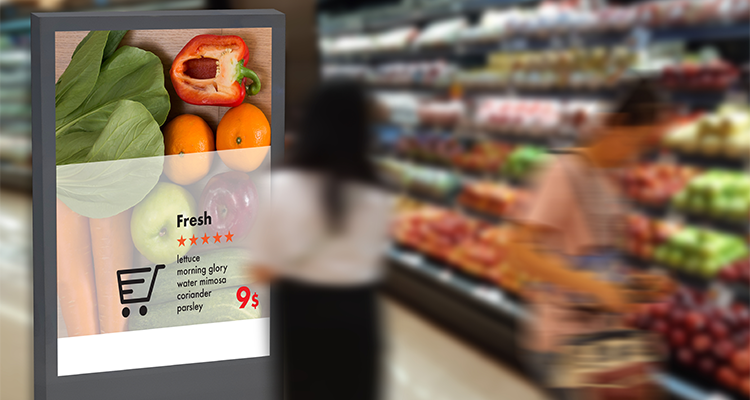Context-Sensitive Signage Is Raising the Bar in Interactivity

Smart use of sensors is enabling the creation of context-sensitive signage that will transform what we mean by interactivity. In the future, signage will look and listen and feel, responding to the surrounding environment so that interaction with it becomes natural and closer to interaction with another person.
For example, if you select and pick up a product from an in-store display, a nearby sales assistant may approach and tell you a little more about it. They will then respond not only to what you say but also to your expression and gestures.
New sensors allow digital signage displays to react in the same way. Displays can invite customers to pick up a product, for example, by drawing the customer’s eye with creative lighting. Movement sensors, NFC communications and RFID tags in products tell the signage which product has been moved and tune the on-screen content accordingly. Face recognition technology can allow the signage to estimate the customer’s age, gender, mood and direction of gaze. Gesture control is already commonplace in computer games and can be applied here too, allowing the customer to move the presentation on with a wave of the hand.
For the retailer, the benefits extend beyond additional sales. Feedback from the sensors can be recorded to provide valuable marketing information. How many times was a product picked up? It may be that some products are picked up frequently and put back without a purchase — while others have a much higher conversion ratio. Perhaps some segments of video are much more successful in driving purchases than others.
One of the most innovative examples I’ve seen recently of the use of sensors is the award-winning House of Rituals experience store in Amsterdam, created by First Impression audiovisual. It showcases the Talisman collection of 25 extraordinary fragrances spanning five fragrance families. Here, customers can select a Rituals perfume based on their favorite scent in an AV display that connects the Rituals scent profiles with two worldwide known databases. The customer is invited to enter their favorite perfume first, and the system automatically finds the closest scent from the Rituals range. A further questionnaire invites customers to enter the basic ingredients that they like and the application illuminates LED lights under all the bottles of perfumes aligned with this scent — narrowing it down to three possibilities, which a customer can then sample and purchase. When a customer picks up a glass pipette from the display, a video plays to showcase the perfume’s ingredients and background information.
With this outstanding display, First Impression has come as close as you can to replicating the interaction with a human sales assistant — for now. It achieved this simply by pairing sensors with standard digital signage players, without moving to AI or machine learning. Without a doubt, pairing context-sensitive signage with these technologies will allow us to create even more exciting experiences.


